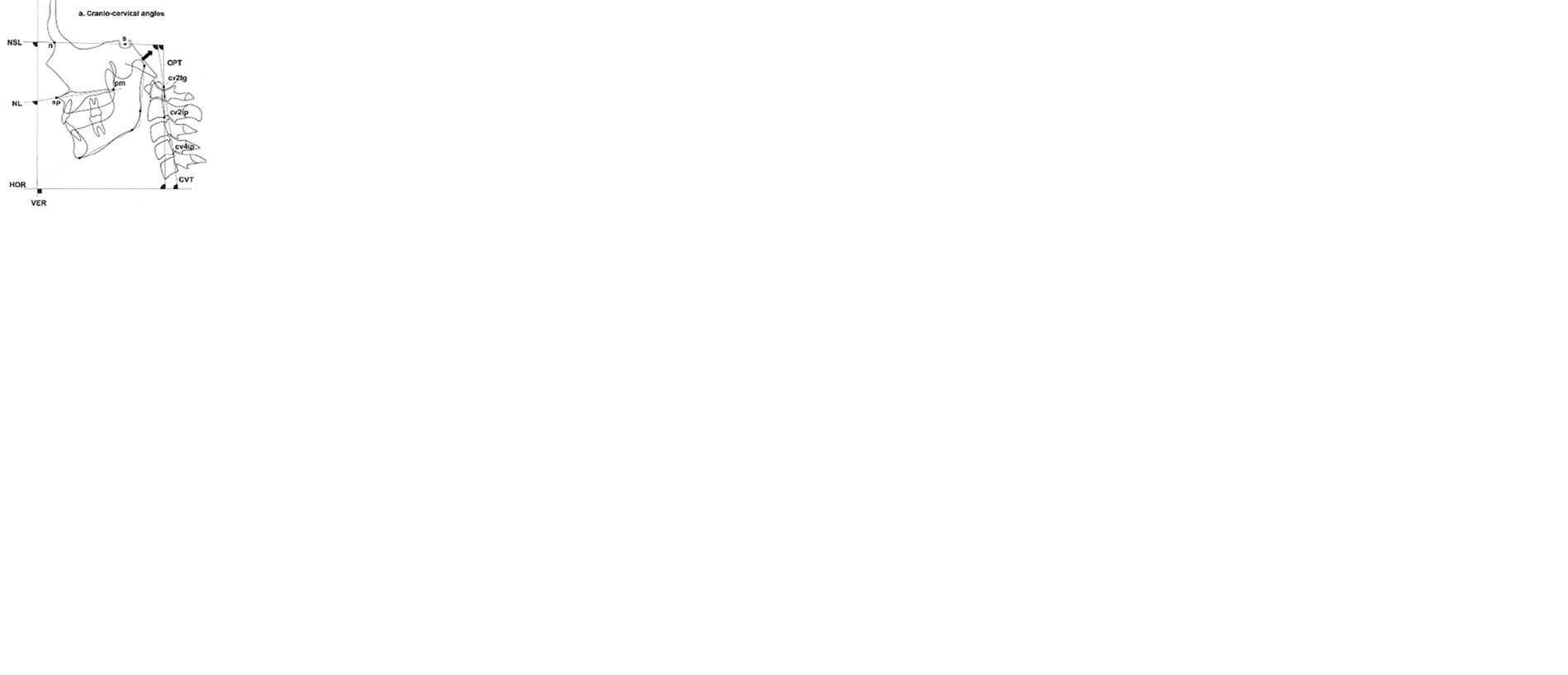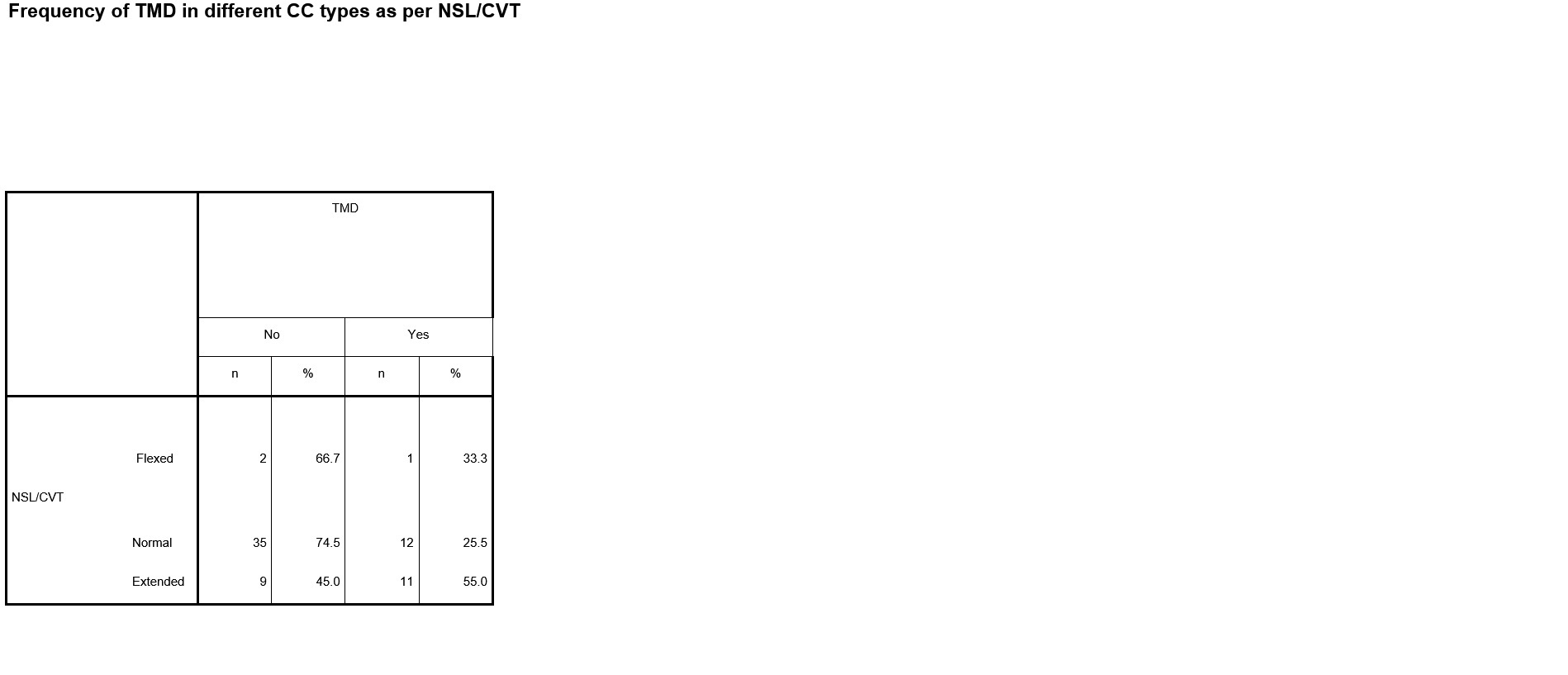IADR Abstract Archives
Craniocervical Posture (CCP) and Temporomandibular Dysfunction (TMD) in Class II Division 1 Malocclusion
Objectives: 1. To determine the prevalence and correlation of different types of Craniocervial postures in patients of Class II Division 1 malocclusion with different vertical patterns.
2. To determine the frequency and association of Temporomandibular dysfunction in Class II division 1 patients.
Methods: Adults (Age 19-30 years) Class II Division 1 patients with an overjet of 5mm were included in the study who did not have any medical, dental, systemic joint or muscle diseases.
Lateral cephalograms were used to determine and classify the malocclusion. Other variables included skeletal jaw relationships, vertical pattern, cervical and craniocervical posture. The cephalograms were drawn manually.
Clinical examination was done to diagnose Temporomandibular dysfunction using Dysfunction Index of Helkimo. It included pain and dysfunction in the muscles of craniofacial region and temporomandibular joint.
Data was analyzed using SPSS 23. Pearson correlation coefficient was calculated for continuous variables like vertical facial pattern, cervical and craniocervical angles. One way ANOVA was carried out for catergories of TMD and other quantitative variables.
Results: Results showed that extended Craniocervical posture was found in 47.1 % of the study group and was significantly correlated to the vertical pattern of the face (r = 0.496 , p =0.000). This means that as the vertical pattern of face increased the cervical spine inclination forward and the head rotation backwards.
TMD was found to be more prevalent (55%) in the extended CCP group than normal CCP group (22.2%).
Conclusions: 1. Extended CCP was present in 47.1% of Class II Division 1 and positively correlated with high vertical pattern of the face so can be considered as an etiological factor in development of high vertical pattern and Class II division 1 malocclusion.
2. TMD was more prevalent in extended CCP group.
2. To determine the frequency and association of Temporomandibular dysfunction in Class II division 1 patients.
Methods: Adults (Age 19-30 years) Class II Division 1 patients with an overjet of 5mm were included in the study who did not have any medical, dental, systemic joint or muscle diseases.
Lateral cephalograms were used to determine and classify the malocclusion. Other variables included skeletal jaw relationships, vertical pattern, cervical and craniocervical posture. The cephalograms were drawn manually.
Clinical examination was done to diagnose Temporomandibular dysfunction using Dysfunction Index of Helkimo. It included pain and dysfunction in the muscles of craniofacial region and temporomandibular joint.
Data was analyzed using SPSS 23. Pearson correlation coefficient was calculated for continuous variables like vertical facial pattern, cervical and craniocervical angles. One way ANOVA was carried out for catergories of TMD and other quantitative variables.
Results: Results showed that extended Craniocervical posture was found in 47.1 % of the study group and was significantly correlated to the vertical pattern of the face (r = 0.496 , p =0.000). This means that as the vertical pattern of face increased the cervical spine inclination forward and the head rotation backwards.
TMD was found to be more prevalent (55%) in the extended CCP group than normal CCP group (22.2%).
Conclusions: 1. Extended CCP was present in 47.1% of Class II Division 1 and positively correlated with high vertical pattern of the face so can be considered as an etiological factor in development of high vertical pattern and Class II division 1 malocclusion.
2. TMD was more prevalent in extended CCP group.



